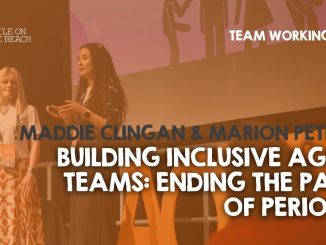People and team member management for Agile project management and Scrum software development teams.
Sizing an Agile team is not an easy task. In this article, Mark Haynes discusses some of the factors (control, the nature of the work, optimal communications) that will influence the decision for the size of a Scrum team.
Implementing Agile and Scrum in software development organization means a big change. In her book “The Great ScrumMaster“, the Agile coach Zuzana Šochová recommends an eight steps journey for a successful transformation to the Scrum approach.
Successful initiatives to change software architectures are directed at achieving an outcome, rather than producing output. Objectives & Key Results (OKRs) provide an accessible mechanism for Scrum teams to set and track desired outcomes as goals.
We all know that there are three roles in Scrum teams : product owner, scrum master, and the development team. Modern software development can sometimes require a high level of specializations that could be beyond the capabilities of the Scrum team members.
Scrum Masters are supposed to be devoid of office politics. Our job is to leverage team potential and provide value to the stakeholders but it’s a big swamp, just teaming with alligators. A Harvard Business Review study indicates, that avoiding hiring a toxic employee can save your company an average of $12,489.
The unmentionable cycle time.. menstruation, is something experienced by half the planet, yet so hidden in the Agile workplace. Whether you menstruate or not, this presentation will challenge the stigma and expand your knowledge. But don’t panic! We’ll be tackling this topic with sensitivity and dashes of humor to support everyone on this journey.
It only takes one toxic manager to make your life hell. To minimize their impact, we need to change the work culture. Our goal is to build a safe space in a collaborative work environment. A good Scrum Master embraces the principles of servant leadership.







